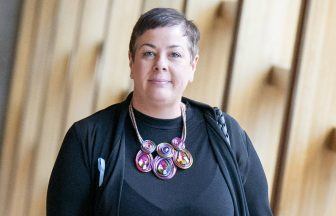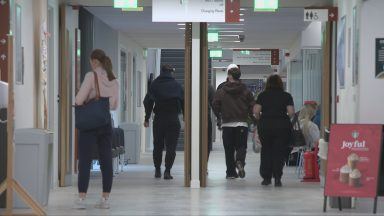Britt Gibson first began experiencing severe pelvic pain and heavy periods in her teens.
Her symptoms worsened over time, with the pain becoming so intense it would leave her vomiting and breaking out in cold sweats.
Britt says her concerns were dismissed and she lived in pain for more than a decade before finally being diagnosed with adenomyosis – a common but under-recognised womb condition that experts warn is still being routinely missed.
“I would get labour-type contractions, and I’d be physically sick from the pain,” Britt told STV News.
“It got to the point where I had to plan my life around my period. I knew it wasn’t normal, but no one took it seriously.”
Despite repeated visits to her GP, it took over 15 years before Britt was diagnosed. When she finally received treatment, doctors found her uterus was the size of someone who had given birth multiple times, despite her never having been pregnant.
Britt was initially diagnosed with endometriosis, another common but often misunderstood condition.
It was only after a second surgery that she was diagnosed with adenomyosis – a condition where the lining of the uterus grows into the muscular wall, often causing the womb to enlarge and thicken.
“The only cure right now is a hysterectomy,” she said. “That’s not a choice anyone should be forced into just to get relief. You’re essentially losing an organ.”
Now running a support group for others with endometriosis and adenomyosis, Britt says one of the most difficult parts of the journey is not being believed, even by close friends and family.
“So many women in our group say the same thing, people around them don’t believe the pain is real. That’s heartbreaking. It makes you feel invisible.”
Experts say adenomyosis could affect as many as one in ten women, but diagnosis rates remain low due to a lack of awareness and limited diagnostic tools.
Dr Varsha Jain, a clinical research fellow at the University of Edinburgh, is among those calling for more investment in non-invasive testing.
“Historically, adenomyosis was only diagnosed after a hysterectomy, which means many women were simply missed,” she said. “We’re now working on better imaging and early detection, but we need more research, and more funding to properly understand this disease.”
The Scottish Government says women’s health is a top priority.
Women’s health minister Jenni Minto told STV News that a second phase of the Women’s Health Plan is now in development, with £250,000 earmarked for research into menstrual health conditions, including adenomyosis.
For Britt, that support can’t come soon enough.
“When you’re in chronic pain all the time, you lose your sense of self,” she said. “I want other women to know they’re not alone. There’s a whole community out there and we deserve better.”
Follow STV News on WhatsApp
Scan the QR code on your mobile device for all the latest news from around the country



























